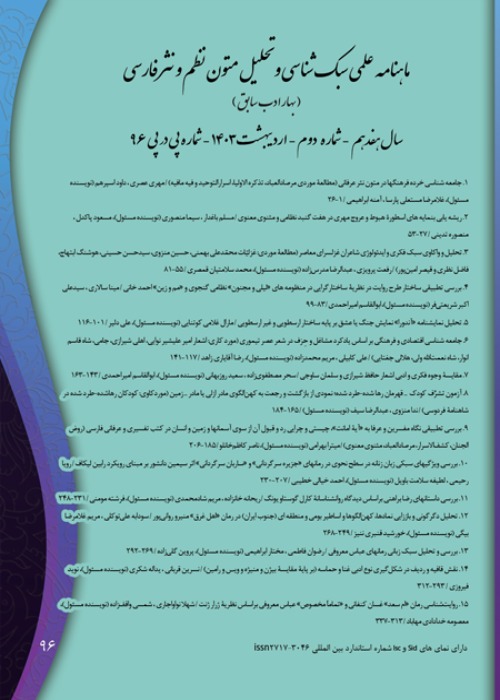Stylistics of simile in Shekaste Qajar's divan
Hasan Ali Mirza Shuja al-Saltaneh, with the name Shekete, was the sixth son of Fath Ali Shah and one of the princes of Ghazal poets and scholars of the Qajar era. He is one of the poets of the second period of the return and literary revival movement, who tried to keep alive the memory of the old poets. Simile is one of the foundations of the science of expression and one of the most important differences between literary speech and non-literary speech. Examining and analyzing the realms of simile will lead to the discovery and recognition of the lyrical works of this era and the level of creativity and understanding of the poet's worldview. In this essay, the simile structure, as the main element and creator of the image in Shekaste Qajar's poetry, and the process of literary creation and stylistic developments of the rhetorical device, have been reviewed.
This essay has been reviewed based on analytical-descriptive method and things like similar elements and components; Types of similes based on singular, binding or composite validity of the simile parties; types of similes based on mentioning or removing the elements of simile; Types of analogies based on sensory or intellectual aspects of the analogies; Types of similes based on shape; Combining analogy with other industries; innovation in analogy; simile in simile; And the unconventional simile is analyzed.
Divan Sheskete contains five odes, 75 quatrains and 353 sonnets, in total, the poet has used 731 similes to present themes. He has had a great interest in combining similes with some imaginative techniques such as metaphor, simile, simile, allusion, contrast, repetition, allusion, irony, and employment; However, there is not much complexity and ambiguity in the structure of his metaphors.
The most similes in Shekaste Qajar's poetry are human beings and their parts and belongings, and the similes are usually chosen from among natural phenomena and human artefacts. In many cases, he has succeeded in defamiliarizing them by introducing a new element into familiar and well-established Persian similes and making them new; However, in general, his similes have still and static images.
- حق عضویت دریافتی صرف حمایت از نشریات عضو و نگهداری، تکمیل و توسعه مگیران میشود.
- پرداخت حق اشتراک و دانلود مقالات اجازه بازنشر آن در سایر رسانههای چاپی و دیجیتال را به کاربر نمیدهد.


